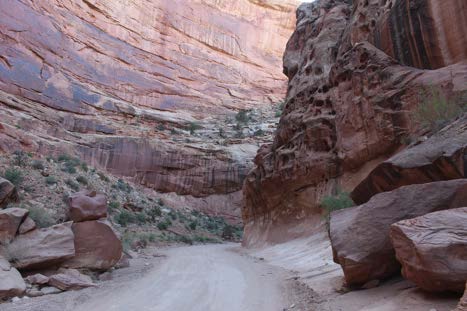Scenic Drive and Capitol Gorge Historic District is significant under Criterion A in the area of
Settlement for its associations with the early Latter-day-Saints settlement of Fruita that was
established in the 1880s and its role in connecting other small Latter-day Saint communities in
the area. Because the route has served as a transportation corridor for over 100 years by
European American settlers and possibly for thousands of years by local Native American tribes,
it is also significant in the area of Transportation. As part of the route’s more recent history, it
was further developed during the CCC and WPA era in the late 1930s and early 1940s and
during the Mission 66 era in the early to mid-1960s to improve visitor access to the natural and
cultural features within CARE; it is, therefore, significant in the area of Recreation. Scenic
Drive and Capitol Gorge Historic District is significant at the state level. The period of
significance is 1883–1966, and significant dates include 1883 (initial construction), 1938–1942
(CCC and WPA improvements), and 1957–1966 (Mission 66 improvements). Scenic Drive and
Capitol Gorge Historic District is historically significant under Criterion D because the postcontact
sites within the district have the potential to yield information pertaining to a number of
important themes, including the CCC and Mission 66 programs, park management strategies,
and recreation and tourism. Scenic Drive and Capitol Gorge Historic District retains integrity of
location, setting, feeling, and association as it relates to its period of significance. Integrity of
design, materials, and workmanship have been diminished, although not fully lost, as a result of
alterations made after the period of significance, including paving Scenic Drive and installing
concrete low-water crossings and culvert headwalls; most of these alterations are compatible
with the district. The road retains its historic relationship to the natural and cultural landscape. It
continues to reflect its early use as a rural wagon road through Capitol Gorge. Its later
development as automobile tourism increased after Capitol Reef National Monument was
established in 1937 and continued to grow in the post-World War II era.
